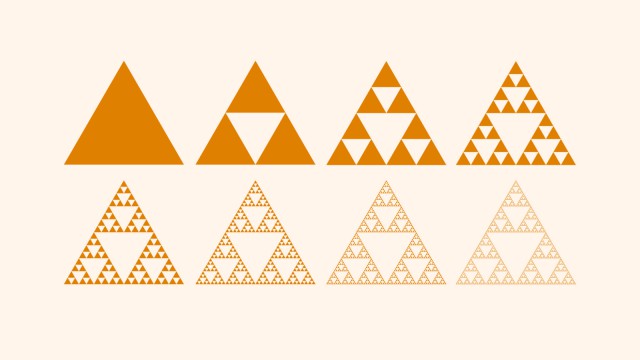A number is said to be Perfect if it is equal to the sum of its proper positive factors, i.e. the sum of its factors excluding the number itself. Summing all of the factors of a number \(n\) — i.e. including the number \(n\) itself — is known as the sum-of-divisors function:
\[\sigma \left( n \right) = \sum\limits_{d\left| n \right.} d \]
A number \(n\) is thus said to be Perfect when \(\sigma \left( n \right)\) = 2n. For example, the factors of 28 — 1, 2, 4, 7, 14 and 28 — sum to 28 + 28 = 56, thus \(\sigma \left( {28} \right)\) = 2 \(\times \) 28 and so 28 is a Perfect number. In contrast, and by way of illustration, the factors of 42 — 1, 2, 3, 6, 7, 14, 21 and 42 — sum to 96, or 2.2857... \(\times \) 42, thus \(\sigma \left( {42} \right) \ne\) 2 \(\times \) 42 and so 42 is not a Perfect number. In fact, 42 is said to be an Abundant number because the sum of its proper positive divisors is greater than the number itself, i.e. \(\sigma \left( n \right) > 2n\). When the sum of a number's proper positive divisors is less than the number itself, i.e. \(\sigma \left( n \right) < 2n\), the number is said to be Deficient. For example, the factors of 50 — 1, 2, 5, 10, 25 and 50 — sum to 93, or 1.86 \(\times \) 50, and thus \(\sigma \left( {50} \right)\) < 2 \(\times \) 42. As such:
\[\begin{array}{l}\sigma \left( n \right) < 2n \Rightarrow n\;{\rm{is}}\;{\rm{deficient}}\\\sigma \left( n \right) = 2n \Rightarrow n\;{\rm{is}}\;{\rm{perfect}}\\\sigma \left( n \right) > 2n \Rightarrow n\;{\rm{is}}\;{\rm{abundant}}\end{array}\]
Perfect numbers have intrigued us since Euclid, who observed via Proposition 36 in Book IX of his Elements that a number of the form (2\(^{p - 1}\))(2\(^p\) − 1) is a perfect number whenever 2\(^p\) − 1 is prime (i.e. what subsequently became known as a Mersenne prime) [1]. The fact that every even perfect number is of this type, i.e. that every even perfect number can be written in the form (2\(^{p - 1}\))(2\(^p\) − 1) whenever 2\(^p\) − 1 is prime, was proposed by René Descartes in his famed correspondence with Marin Mersenne (specifically in his letter to Mersenne of 15 November 1638) [2], and later proven in 1849 by Leonhard Euler [3]. Descartes was, indeed, 'among the first to consider the existence of odd perfect numbers' (Greathouse and Weisstein, 2012).
As of writing, of the fifty perfect numbers that have been found, all are even, and it is not known if there are infinitely many or, indeed, whether any odd perfect numbers exist — although Pascal Ochem and Michaël Rao showed (2012) that no number up to 10\(^{1500}\) is an odd perfect number.
One number has been found, however, that would have been an odd perfect number if only one of its factors was prime rather than a 'spoof prime' (i.e. a composite number wrongly assumed to be prime). This number — 198,585,576,189 — was found in 1638 by Descartes, documented in his 15 November letter to Mersenne, and is known as a Descartes Number, or, as an 'odd spoof perfect number' (note that the spoof prime in question is 22021, i.e. 19\(^2\) \(\times \) 61).
\[198,585,576,189 = {3^2} \times {7^2} \times {11^2} \times {13^2} \times 22021\]
Descartes showed that if 22021 was prime, the proper factors of 198,585,576,189 [4] would sum to 198,585,576,189 — making it the only odd perfect number ever found. As it is, because 22021 is not prime, or because 22021 is a spoof prime, the proper factors of 198,585,576,189 do not sum to 198,585,576,189 (they actually sum to 227,441,894,589). This makes 198,585,576,189 an odd spoof perfect number, which in itself is the only such number ever found!
To elaborate: Descartes showed that an equivalence to the sum-of-divisors function using the prime factorisation of a number is the following [5]:
\[\sigma \left( n \right) = \prod\limits_{{p^a}\left\|{\;n} \right.} {\frac{{{p^{a + 1}} - 1}}{{p - 1}}} {\rm{ }}\]
where \(p\) is a distinct prime factor. This means that a number's factors can be summed using only the number's prime factors. Taking 28 again as an example, we have seen that it is a perfect number because
\[\sigma \left( 28 \right) = \sum\limits_{d\left| 28 \right.} d = 1 + 2 + 4 + 7 + 14 + 28 = 56 = 2n\]
We can also observe this result using the prime factors of 28, i.e. 2\(^2 \times \) 7:
\[\prod\limits_{{p^a}\left\|{\;n} \right.} {\frac{{{p^{a + 1}} - 1}}{{p - 1}}} = \frac{{{2^{2 + 1}} - 1}}{{2 - 1}} \times \frac{{{7^{1 + 1}} - 1}}{{7 - 1}} = \frac{7}{1} \times \frac{{48}}{6} = 56 = 2n\]
And so, similarly, the sum of the divisors of Descartes' number:
\[\begin{array}{c}\begin{align}\sigma \left( 198,585,576,189 \right) &= \prod\limits_{{p^a}\left\| {\;n} \right.} {\frac{{{p^{a + 1}} - 1}}{{p - 1}}} \\ \\&= \frac{{{3^{2 + 1}} - 1}}{{3 - 1}} \times \frac{{{7^{2 + 1}} - 1}}{{7 - 1}} \times \frac{{{{11}^{2 + 1}} - 1}}{{11 - 1}} \times \frac{{{{13}^{2 + 1}} - 1}}{{13 - 1}} \times \frac{{{{22021}^{1 + 1}} - 1}}{{22021 - 1}}\\ \\&= 13 \times 57 \times 133 \times 183 \times 22022\\ &= 13 \times \left( {3 \times 19} \right) \times \left( {7 \times 19} \right) \times \left( {3 \times 61} \right) \times \left( {2 \times 7 \times 11 \times 11 \times 13} \right)\\ &=2 \times {3^2} \times {7^2} \times {11^2} \times {13^2} \times \left( {{{19}^2} \times 61} \right)\\ &= 2 \times {3^2} \times {7^2} \times {11^2} \times {13^2} \times 22021\\ &= 2 \times 198,585,576,189\end{align}\end{array}\]
Hence, if 22021 were prime rather than 19\(^2\) \(\times \) 61, Descartes' number 198,585,576,189 would be an odd perfect number because \(\sigma \left( n \right)\) = 2n.

















